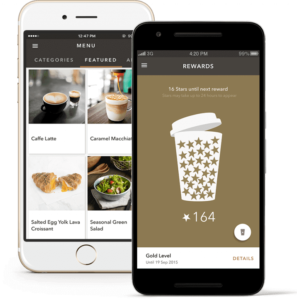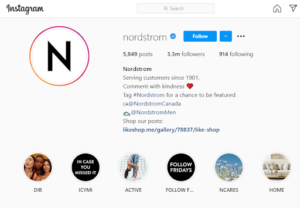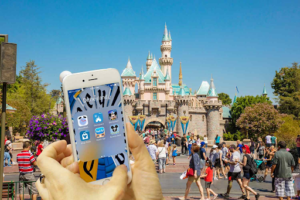In today’s growing world customers can buy at any time, any place, and from any device. To achieve this, E-commerce businesses need to adopt Omnichannel Marketing Strategy to increase the user experience and retain their trust.
According to a survey conducted by Aspect Software, businesses that adopt omnichannel strategies achieve 91% greater customer retention rates compared to businesses that don’t.
That’s why it is crucial for E-commerce marketers to acquire an Omnichannel Marketing Strategy for their online business. In this article, you will get a clear idea about Omnichannel Marketing and tips on how to improve Omnichannel Marketing. Beyond that, you will also get to know top leaders who have implemented omnichannel Marketing for their business.
What is Omnichannel Marketing?
Omnichannel Marketing is an SEO strategy that is based on marketing via multiple channels. The objective of omnichannel marketing is to provide a cohesive and integrated experience that will search for customers and find them wherever they are.
Omnichannel marketing ensures that the customer everywhere feels the same. Whether the customer is interacting via Facebook, the mobile, or computer. Omnichannel account for each device that the client uses to interact with a brand and ensures the customer receives an identical experience everywhere.
Omnichannel Marketing Vs. Multichannel Marketing
Omnichannel Marketing and Multichannel Marketing are usually considered identical. However, all omnichannel marketing is multichannel marketing but all multichannel marketing is not omnichannel marketing.
-
Omnichannel Marketing
Omnichannel Marketing is based on users. With Omnichannel, customers have an easy and seamless experience with all the channels regardless of any channel they use.
The success of Omnichannel Marketing is achieved when all the channels work together to deliver a cohesive and consistent user experience. Anything seen on one channel will be seen on every other channel.
For example, a business using Omnichannel Marketing will run the same offer in every channel, with the same visual and targeting the same audience.
-
Multichannel Marketing
In contrast to Omnichannel Marketing, Multichannel Marketing is based on channel. Each channel works differently based on what is best for the particular channel.
Goals, statistics, and analytics may vary in various channels for Multichannel Marketing. The various channel is used to achieve different goals of marketing.
For example, Instagram Giveaway is used to target a younger audience, while newspaper ads are used to target an older audience. Both the channels can be used by the same company for marketing purposes.
Ways to Master Omnichannel Marketing
Here is the step by step guide to master Omnichannel Marketing for your business in 2021:
-
Begin with customer data
When planning for Omnichannel Marketing, the first thing is to learn about your customers as much as possible.
But how can you learn about your customers? It can be done through data.
Comprehensive customer data will help you to learn about where they are, their statistical information and remove the misconception you may have about them.
As you go ahead with your Omnichannel Strategy, keep collecting and measuring customer data.
Initiate with analyzing every step of customer purchase, google search, and ads campaign metrics. Measure all the steps with every channel like a Facebook link, Instagram post. Examine what gives the best customer experience and what gives the worst.
You can even gather data directly from customers via surveys. Ask customers to leave a review, use live chat, encourage response through offers and prizes.
The data you collect from all the mediums will help you to get insights on where the customers are getting attracted and where theta are going away.
-
Emphasize on Customer Experience
A customer-oriented approach is always the effective one for every business. It is the main motive force for the omnichannel strategy.
The data you collected in the first step of the omnichannel strategy, now it’s time to analyze it. Start with the best customer purchasing experience. Examine engagement metrics and determine your best and worst strategies.
Find out which channels are performing best and efficiently. Compare these metrics with the channels that are not performing well. Find out the way the audience interacts with your brand.
Ask yourself that is it the best purchasing experience you are providing? Will the customers be satisfied? How can we do better? Make use of customer feedback to help you out with the answers os these questions and make necessary changes with your business.
-
Divide Your Audience
Segmenting your audience is necessary for your omnichannel marketing as everyone does not use the same channels.
You can divide your audience in multiple ways. Based on the location, demographic characteristics, or personal interests. The trick is you must know the right time to start and stop.
Segmenting customers will help you to create distinctive marketing messages with great peculiarity. And as a result, deliver the appropriate message to the appropriate audience at the appropriate time.
Identify your buyer persona by finding out the ideal audience for your business. For example, a woman clothing store will have female buyers as their frequent and regular customers. However, sometimes they will find a male who wants to buy for their wives or female friend.
Use data to identify the type of customers, shopping behavior, and engagement with your store. Once you have segmented your customers, it is easy to identify which customers use which channels and create your omnichannel marketing strategy.
-
Produce Relevant Content
The content you create is the root of your omnichannel marketing strategy. Your content should be based on the data you collected to study your audience.
Analyze how your customer finds you and where they abandon. For example, if the customer finds you by Google search, your content must be SEO-based to be visible easily on search engines. If they leave without purchasing, your content must be focused on attracting abandoned cart customers.
Find the channel that customer uses to reach you and create content relevant to it that tends customers for buying.
-
Testing is must
No marketing campaign should be launched without testing and omnichannel is no different. To ensure the success of your strategy, you need to test data before the release of the strategy, in the middle of the running strategy, and after the strategy gets over.
It is recommended to use A/B testing for blogs, newsletter emails, and social networks. Keep track of customer engagement and the comprehensive efficacy of the strategy.
When finally your omnichannel strategy is over, test the final effectiveness of data. Better testing, better strategy.
Examples for Omnichannel Marketing Leaders
1) Starbucks

Image Source: Stamp Me
Starbucks Reward App is the best example of Omnichannel Strategy. The customer gets rewards on every purchase.
2) Nordstrom

Nordstrom allows customers to directly purchase from Instagram or Pinterest in order to increase the shopping experience of the customers. Customers can also make a purchase through a website or mobile app.
3) Disneyland

Image Source: TripSavvy
The customers can plan a trip, book their visit, view attractions via Disney Mobile App while they are on the plane, in hotel rooms, or on any corner of the world.
To Sum Up
There is no doubt Omnichannel Marketing works wonders for your brand. With Omnichannel you can improve customer engagement, increase brand awareness and build long-term relationships with your customers.
To implement Omnichannel Marketing for your Magento store, integrate Shoppable Instagram and Facebook Shop to let customers shop from the channel itself.
Don’t hold back and stay behind. Start with the Omnichannel Marketing Strategy for your business today.


